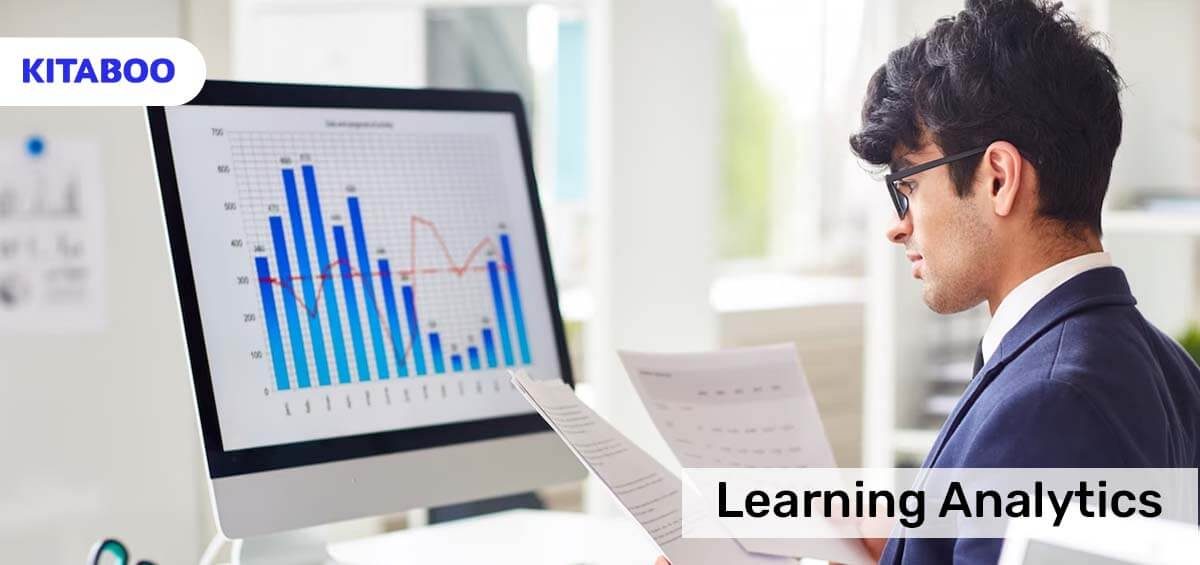Although learning analytics is a developing phenomenon, it has proved to be highly beneficial in revolutionizing the K12 education and publishing industry. Over the past decade, particularly after the global pandemic, digital learning tools have become more sophisticated and advanced. Learners across all ages are utilizing digital functionalities like digital repositories, learning management systems, online learning platforms, and more to advance their knowledge and skills.
K12 educators and publishers have also benefited from these functionalities by enhancing learning outcomes. Learning analytics is a digital data measurement technique that can effectively gauge a student’s academic performance.
If you want to know more about learning analytics, continue reading further. In this curated guide, we have covered everything you need to know about learning analytics and its adoption.
Table of Contents
I. What is Learning Analytics?
II. Impact of Learning Analytics on K12 Publishers
- Enhanced Content Development and Personalization
- A Niche in the Competitive Marketplace
- An Effective Research Tool
- Enhanced Focus on Academically Weak Students
III. How to Adopt Learning Analytics?
- Step 1 – Identify the Needs and Objectives
- Step 2 – Conduct In-Depth Market Research
- Step 3 – Integration and Configuration
- Step 4 – Training and Pilot Testing
IV. Wrapping Up
I. What is Learning Analytics?
Learning analytics is a powerful tool to measure the academic performance of learners. It utilizes various data collection and analysis techniques to gain useful insights from a large amount of student data. Educators and teachers use this information to customize and personalize their teaching approaches.
The learning analytical tools collect a wide range of data like student demographic information, academic performance, internal & external communication, personal preferences, and more. The intuitive tool then recognizes patterns in the data and draws correlations between the various parameters.
Learning analytics tools have raised ethical and moral concerns in the past. Consequently, educational institutes, publishing houses, and other organizations using this tool must strive to use the collected information responsibly and ethically. The learners and parents must be aware of the learning analytical tool guidelines and must consent to them.
II. Impact of Learning Analytics on K12 Publishers
The various features and functionalities of learning analytical tools have proven highly effective for K12 publishers in personalizing educational material. The performance insights from the tool allow publishers to align the content with learners’ needs.
Mentioned here are some benefits of learning analytics for K12 publishers:
Enhanced Content Development and Personalization
The deeply analytical data insights from the tools allow publishers and educators to modify the learning material accordingly. Considering the academic strengths and weaknesses of the students, the content can be effectively aligned with the academic requirements.
Additionally, the data insights from learning analytical tools also allow publishers to recognize which feature of the digital product/content enhances the learning outcomes and is liked by the students.
Services like KITABOO offer the means to create robust learning management systems enriched with learning analytics for your educational institution. This technology enables institutions to deliver a comprehensive learning experience, leading students to success.
A Niche in the Competitive Marketplace
Due to the easy availability and adaptability of digital tools and apparatuses, the online marketplace has become highly competitive. The K12 education and publishing industry is constantly struggling to attract new users and create a niche in the market.
An effective and efficient learning analytical tool can provide K12 publishers with a much-needed competitive advantage. The K12 industry prefers educational content and products that are tailor-made to their needs, resulting in rapidly growing learning outcomes.
An Effective Research Tool
Like the digital marketplace is constantly changing, similarly, educational needs and trends are rapidly evolving. As a publisher and educator, you need to keep yourself informed regarding the new K12 education trends.
A learning analytical tool can be your savior in such a situation by providing valuable and well-researched insights. It does not only measure students’ academic performance but also other parameters like educational trends, K12 methodologies, digital instructional strategies, and more. This can help you in making well-informed and relevant K12 education content decisions.
Enhanced Focus on Academically Weak Students
The learning analytics tool identifies academically weak students. Students can be offered custom-made educational content to enhance their performance and engagement. By adding tracking features, the time students spend on each module can be tracked, and necessary adjustments can be made.
Also Read: Digital eBook Libraries
III. How to Adopt Learning Analytics?
Adopting learning analytics for K12 publishers requires careful planning, implementation, and management. Additionally, adopting misaligned learning analytical tools can be a disadvantageous and costly affair.
Here are steps you can take to adopt learning analytics successfully:
Step 1 - Identify the Needs and Objectives
The first and most important step is to identify the needs of your learners. Determine the learning outcomes and select an analytical tool that best aligns with them.
Step 2 – Conduct In-Depth Market Research
There is a wide range of learning analytical tools available in the market. Do extensive research and select the one that offers the best features. Ensure all the functionalities are aligned with the learning objectives and methodologies. You do not want to be paying for features you will not be using or will not benefit you in any way.
Step 3 – Integration and Configuration
Once you have selected the appropriate learning analytics tool and before you start utilizing it for measuring academic performance, you must carry out all the integrations. You will have to integrate the tool with the learning management system or other online learning platform you are using. During the integration and configuration, ensure all the data privacy and security measures are adhered to.
Step 4 – Training and Pilot Testing
Before you deploy the tool, training the professionals who will be using it properly is important. Sufficient training of the administrative staff and the other stakeholders involved will ensure the data is interpreted correctly and provide useful insights.
Lastly, remember to pilot test the learning analytics tools in a controlled environment. This will help you identify any issues and fix them as soon as possible. You can also take feedback from those using the tools to recognize areas of improvement.
IV. Wrapping Up
It is safe to say that learning analytics can prove to be highly effective in the ever-changing digital landscape. This powerful tool can revolutionize the learning methodologies and outcomes for the better. The positive transformation motivates learners to perform better and fosters a strong learning attitude.
If you are looking for a learning analytics tool, you can reach out to us at KITABOO. Our strategically designed learning analytics services will enhance your reputation as a K12 publisher. We have a trusted customer base globally, and you can be our next customer.
Reach out to our expert team now and get started.
To know more, please write to us at KITABOO@hurix.com.
Suggested Reads:
Discover How An Ebook Conversion, Publishing & Distribution Platform Can Help You
Kitaboo is a cloud-based content platform to create-publish & securely distribute interactive mobile-ready ebooks.
You May Also Like








